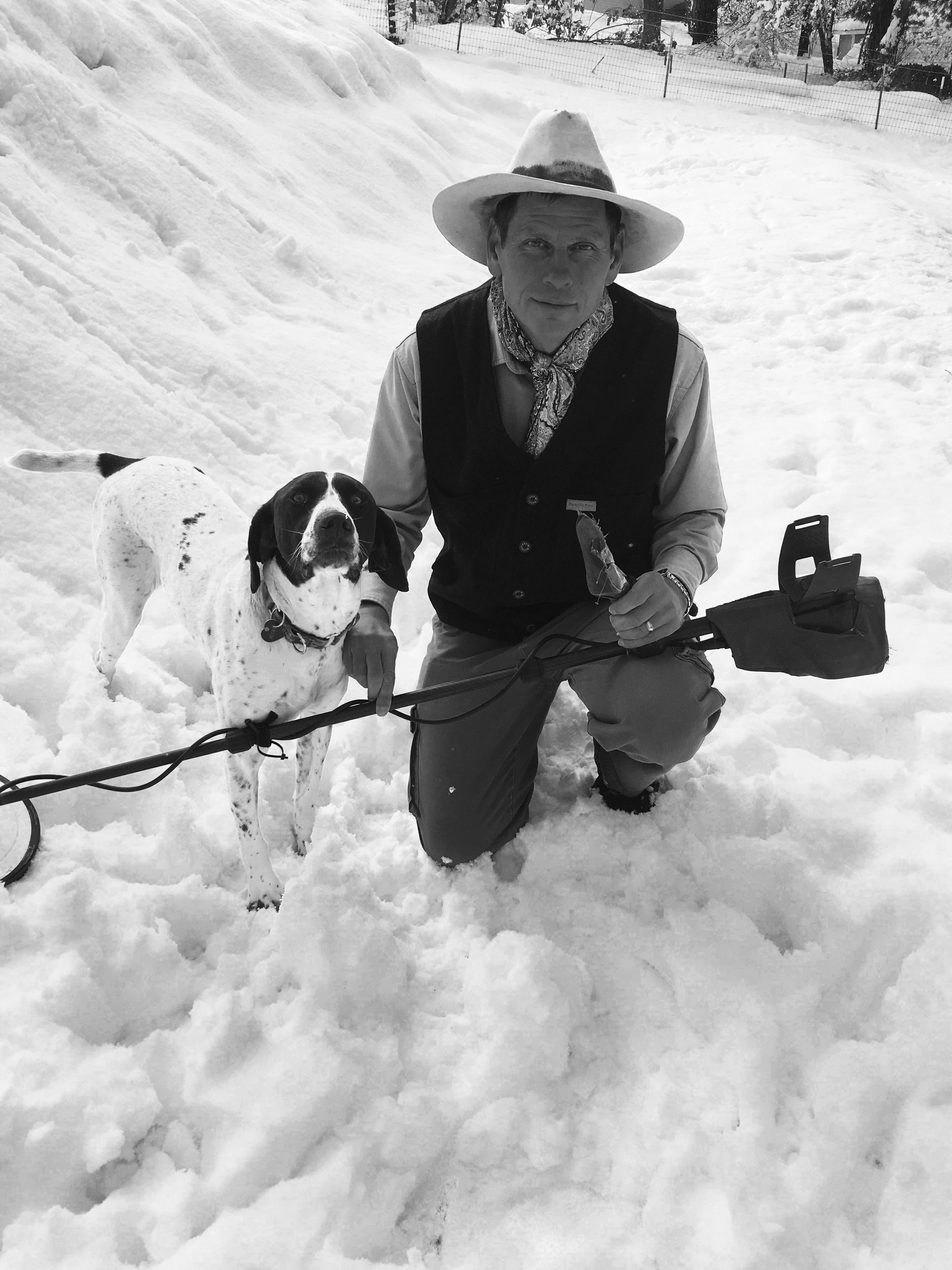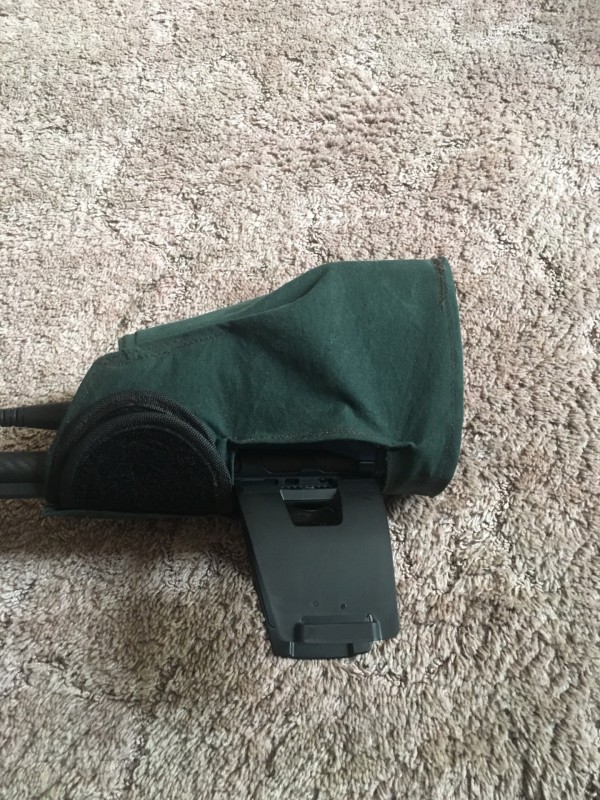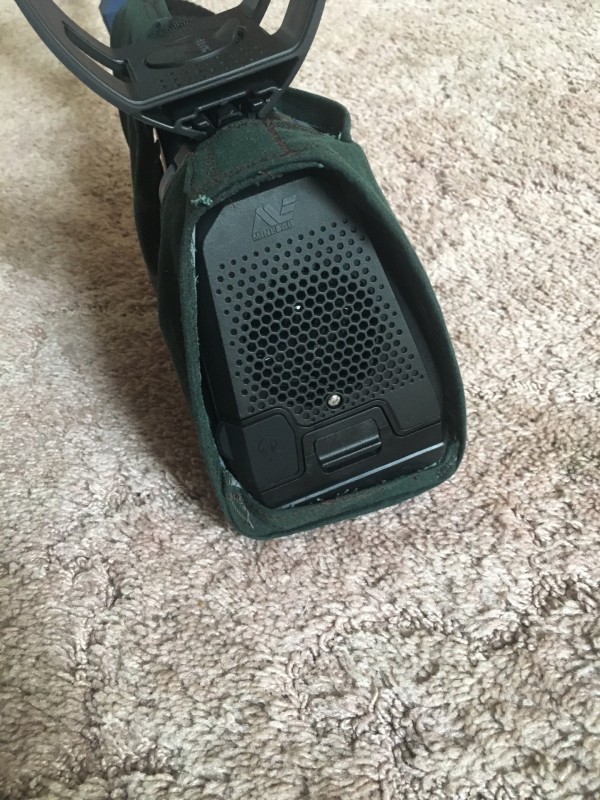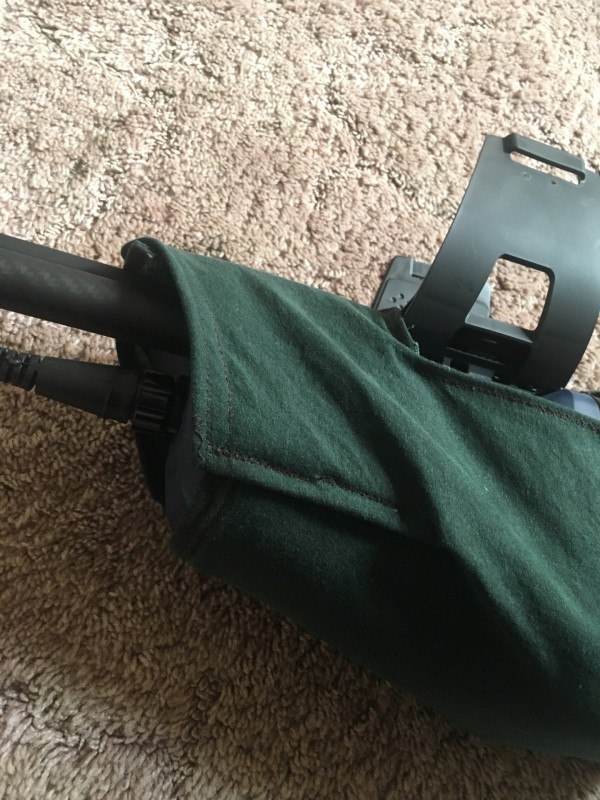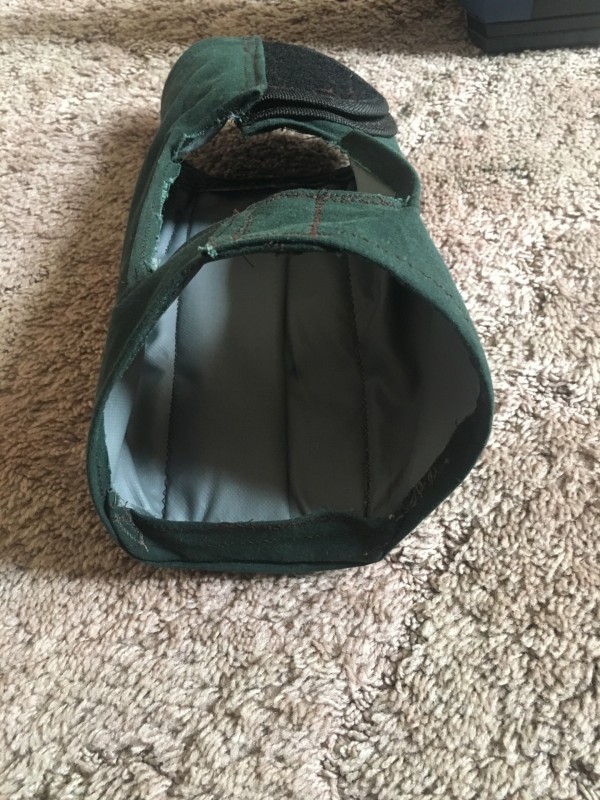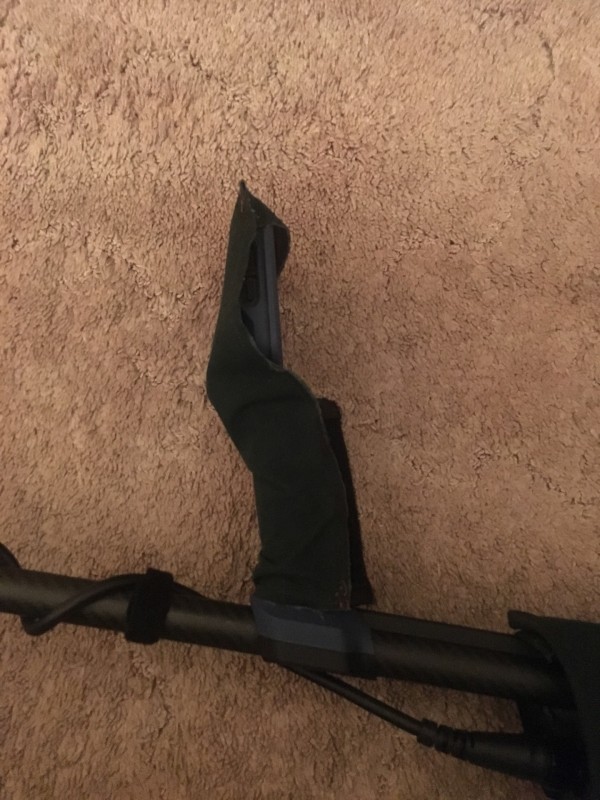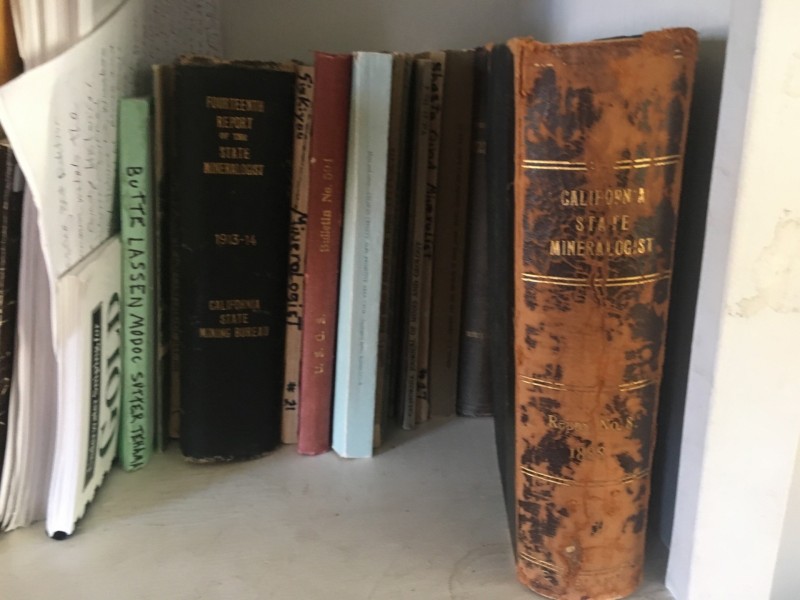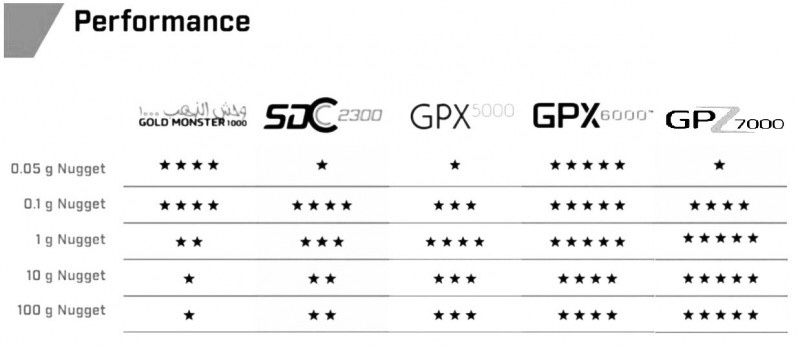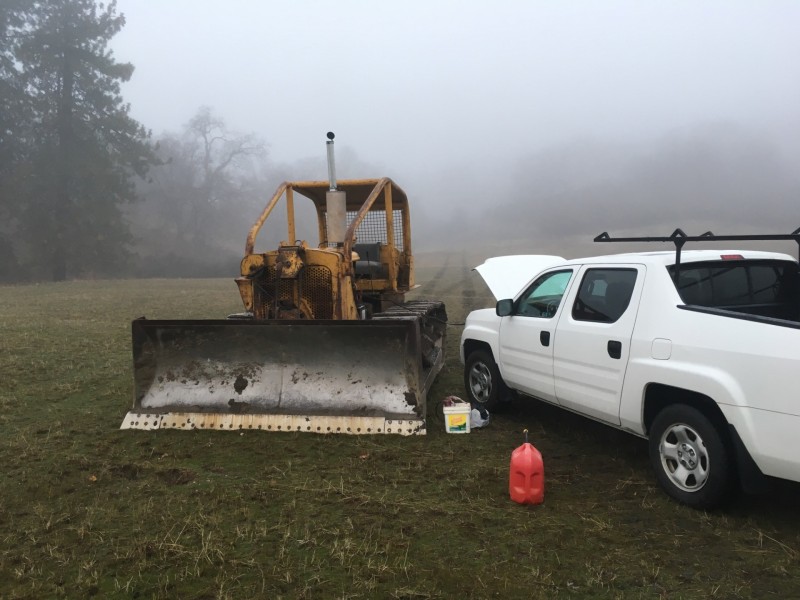-
Posts
283 -
Joined
-
Last visited
Content Type
Forums
Detector Prospector Home
Detector Database
Downloads
Everything posted by RONS DETECTORS MINELAB
-
afreakofnature, This is a great writeup on the GPX6000 and it’s capabilities in a variety of conditions and it’s performance against the previous top dog detectors. I have not tried the tip on going from normal to difficult and back to normal, thanks for sharing and I look forward to trying this out as I have had some false signals in hot ground. Best wishes on your next hunt. Ron
-
GPX 6000 Diy Covers
RONS DETECTORS MINELAB replied to RONS DETECTORS MINELAB's topic in Detector Prospector Forum
Vanursepaul, Yes, it’s is short, kinda like it though for protection and being lightweight. Since the detector is rain resistant figured it would suffice. Also tried the detector out today and it’s very impressive on small spider gold. Had to go double D to better handle the highly mineralized serpentine though, but the mono was somewhat effective on this ground which was never the case before with an older GP model mono coil, so I’m a happy camper now. -
Got creative today and decided to sew up a super light weight cover with a waterproof liner and the bottom padded for my GPX 6000. 3 ounces for weight.
-
Back From Alaska, A Different Version
RONS DETECTORS MINELAB replied to Reno Chris's topic in Detector Prospector Forum
Chris, Thanks for the pictures and story, this is a great time of year to be in Fairbanks. I was there also years back during this time of year and had a great time, the mosquitoes were not even bad when I went and enjoyed the long daylight hours. Ron -
My Walco Pick Finally Arrived!
RONS DETECTORS MINELAB replied to Goldseeker5000's topic in Detector Prospector Forum
The Supersede picks look really nice. 😎 -
Minelab GPX 6000 Misadventures At Sawtooth Nv
RONS DETECTORS MINELAB replied to Condor's topic in Detector Prospector Forum
Toyo M55 ten ply commercial tires seemed to be the tire I’ve had best success with in NNV, eastern Oregon, and Idaho. Next best for me was Michelin 10 ply tires. Note IMHO these tires seem to ride better and handle the washboard roads better with a lower tire pressure. -
How Bad Is Minelab Customer Service?
RONS DETECTORS MINELAB replied to Edward78208's topic in Detector Prospector Forum
Great info. -
Great Time To Sell A Gold Detector?
RONS DETECTORS MINELAB replied to strick's topic in Detector Prospector Forum
My guess is covid has slowed manufacturing and shipping down.😕 -
GPX 6000 - Tips, Tricks, Technical Questions
RONS DETECTORS MINELAB replied to Northeast's topic in Detector Prospector Forum
After doing a quick noise cancel I was able to run the Nox next to the Gold Bug 2 without any apparent interference. Did this a lot when trying to see if the Gold Bug 2 could pickup any crumbs the Nox missed. The Nox was quite impressive. -
GPX 6000 - Tips, Tricks, Technical Questions
RONS DETECTORS MINELAB replied to Northeast's topic in Detector Prospector Forum
Could not find this on any of the earlier topics, but has anyone run the nox next to the 6000 to see if there’s any interference issues. Thanks for any info. -
Loose lips sink ships. Same with any gold rush.
-
Official Minelab GPX 6000 Page
RONS DETECTORS MINELAB replied to Steve Herschbach's topic in Detector Prospector Forum
If I owned all five of the detectors that are on the performance chart then I would definitely go find some moderately mineralized ground and see how far down I can hear each of the five nugget sizes .05, .1, 1, 10, 100 gram indicated on the performance chart, even using different coil sizes to achieve the best sensitivity and for best depth dependent on nugget sizes.This would give me a more transparent idea of the differences in detector performance, where they excell and struggle. -
Where To: Nugget Hunting Nw Az Or Ut
RONS DETECTORS MINELAB replied to Jzconcepts's topic in Detector Prospector Forum
Jzconcepts, IMHO go where gold was found before, lots of research we’ll serve you best in doing this. USGS or state mines bureau’s publications are a good starting place for research. USGS Bulletin’s 1355 Arizona Placer deposits, 1357 Utah Placer deposits, and 1348 New Mexico Placer deposits all by Maureen G. Johnson are pretty good, but remember these are well known by most detectorist, so look for more obsolete mining ⛏ publications to find those areas not so hunted. Wish you the best on your adventures. -
Official Minelab GPX 6000 Page
RONS DETECTORS MINELAB replied to Steve Herschbach's topic in Detector Prospector Forum
The Equinox works really good at finding small gold in low mineralized ground. So if the 6000 can closely match it in highly mineralized ground that would be a huge breakthrough, for me even if it comes somewhat short of matching the Equinox in these harder conditions I’ll be very content. That would be a high bar I’ve never thought could happen with metal detectors. 😃 No ferrous I’d, I can live with this, maybe my Equinox can fill this gap working together with the 6000. As for larger gold I’ll be very happy to see it come in even a little short of 20% depth gain over the 5000 in heavily mineralized ground as the performance chart shows. What does this performance chart measures by means of the stars, is it a depth comparison without giving any actual measurements ? The attached Gold Bug 2 depth chart really shows how high the bar has been set in the past for smaller gold in low mineralized ground, I’m not expecting this to be surpassed though. My thanks to Minelab for making a lighter weight PI with no cords.😊👌 -
GB_Amateur, I agree technological advancement can be a double edged sword. I definitely like the new technology, even though it does feel like it sometimes moves to fast and forgets the older and more reliable features that did not change for the better. One example is that I’m basically dirt farming and camping in the most remote places in the U.S. so having a ruggedized detector with a long lasting battery would work best for these situations. We used to have detectors that could run on 40 plus hours on one set of batteries and now the detector I use most frequently has an internal battery that can only last 12 hours.
-
Thank for your comment Steve. I agree there are some things that probily are needing left behind as we push forward. By this post I was hoping to get more feedback to companies of what the consumer wants in a detector, and hopefully say it’s been done before, not hard to do, why not bring it back, can it hurt. Kinda of like the 6000 being made lighter with a built in speaker or having a Toyota diesel in the U.S. let’s do what works best.
-
I know we have had some great advancements in VLF metal detector's over the recent past, but I am hoping that we can keep some of the older design features that seemed to work well. My favorite new technological features being offered in VLF's are Multi-IQ and single frequencies options, fully programmable settings, waterproof, noise cancel, USB chargers, li-ion batteries, Bluetooth headphones, prospecting & coin/relic options, and lightweight. Really a great job by the inventors of these detectors. IMHO I hope we do not lose some of the past designs that worked well, such as the ergonomics of the balanced s rod that would separate in three places for backpacking, the hip mountable brain box, the detectors that would not fall over when put on a little bit of an uneven surface, the 6.5 inch elliptical concentric or double DD coils for great access in rocky areas, the 1/4 inch headphone jack, the spare interchangeable battery pack that takes regular batteries to serve as a back-up for the li-ion battery pack, and higher frequencies options. I would like to see what else had worked well with other detector user, seems like we are always buying aftermarket parts to retain some of these older features where possible.
-
Sub Gram Coil For Gpx5000
RONS DETECTORS MINELAB replied to Skozzy99's topic in Detector Prospector Forum
Steve, Welcome to the forum! The above chart shows the performance of several Minelab Detectors including the ones you mentioned. The smaller 8 inch Commander mono coil or Coiltek Goldstalker mono 6 inch will give more sensitivity on sub-gram gold vs. the larger coils. In low minerized ground the GM 1000 will find smaller gold than the gpx 5000, but will not go as deep on larger gold. Ron -
Gerry, I really like the specimen in its natural form. I would be interested to see if it’s disseminated gold or a solid mass by putting a continuity tester to it and seeing if there a connection. I’ve had poor luck etching placer specimens due to the rounding off of the outside gold which gives it a strange look. 🤔 Large specimen are most always worth more in a natural state, especially if from a rare location.
-
Thanks Gerry and Steve for really narrowing down the best options for gold detectors for myself and hopefully for many other prospectors. Sounds like all a person needs nowadays is a select few detectors, mainly due the great technological advancements made from Minelab. Wow! You can now have one multi frequency VLF detector that can handle relics, coins, shallow gold and disc. trash out fairly well- the Nox and a disc. PI that can handle deeper gold in moderate trash areas if using caution due to false signals- the GPX 5000 and in areas with very little trash one will most likely get by well using only one detector for all types of gold- the GPX 6000.😎 😁
-
Thanks all for the recent advice and explanations! I also wanted to mention and thank Steve Herschbach for his metal detector database with reviews which was very helpful in narrowing down the capabilities of the large list of gold detectors available from past to present. I do feel all the detectors I’ve narrowed my research too from this list our very high end detectors and several I would of never considered before reading about them. I only wish I had more opportunities to try all these detectors out (toys for me). It well be most likely I well need quite a few different detectors to meet all the type’s of detecting I do in different environments. Hopefully more detector feedback on the reviews page or on this post will help more in narrowing down these detector options.🙂 My old hole digger.
-
Hello all, My name is Ron and I'm new to the forum and have been learning a lot from it's members and really appreciate all the time everyone puts into this forum, some really great information comes from this forum. I'm in the market for an upgrade from my current detectors and am trying to decide on which would be the best detector for the worst case scenario as I have currently been detecting in the Siskiyou's serpentine gold belt (pretty much to hot for VLF's) and this gold belt also contains a very large amount of trash. The Equinox 800, Gold Bug 2, Garrett AT Gold have not been able to handle the mineralization of this ground very well. I have not tried any other VLF’s here though. I usually rely on my Minelab Pulse Induction unit in this ground and use the iron disc. to save probably 75% of my time from digging unnecessary holes. I'm still interested in owing a top of the line VLF due to I detect mine dumps in the backcountry of Idaho, Nevada, and eastern Oregon where the trash is less abundant and the ground is not so mineralized even though it is usually steep and rugged (great VLF areas). After reading several posts on this forum I have narrowed my research of VLF metal detectors to the Equinox 800, Gold Monster, X-tera 705 Gold Pack, Nokta/Makro Gold Kruzer or AU Gold Finder, White's 24K or MXT, or a second back-up Gold Bug 2. I am really looking for the machine that can handle the hottest ground and has the sharpest sound on small and deep gold. Although no detector is a do it all machine I'm hoping the one that can handle the hot ground the best should be able to excel with better iron/disc. and target separation regardless of it being a multi-purpose detector or gold only detector, my assumption only. Does the frequency of detectors change their ability to handle hot ground like Australia. Has anyone tried these detectors in highly minenalized ground with any good results? For Pulse Induction I'm narrowing my research to the GPX 6000 and/or GPZ 7000 both non disc. units for a great option for Idaho, eastern Oregon, and Nevada were there is less lead and iron trash present. For these Siskiyou's trash sites I'm looking at the GP/GPX series with iron/disc. Garrett ATX, Fisher Impulse Gold (has anyone been able to separate out lead and iron trash with the Fisher limited AQ Impulse version and still find small and deep gold)? Has anyone got a good grasp on these machines being affective in iron and lead infested areas? Thank You for your time. Ron

